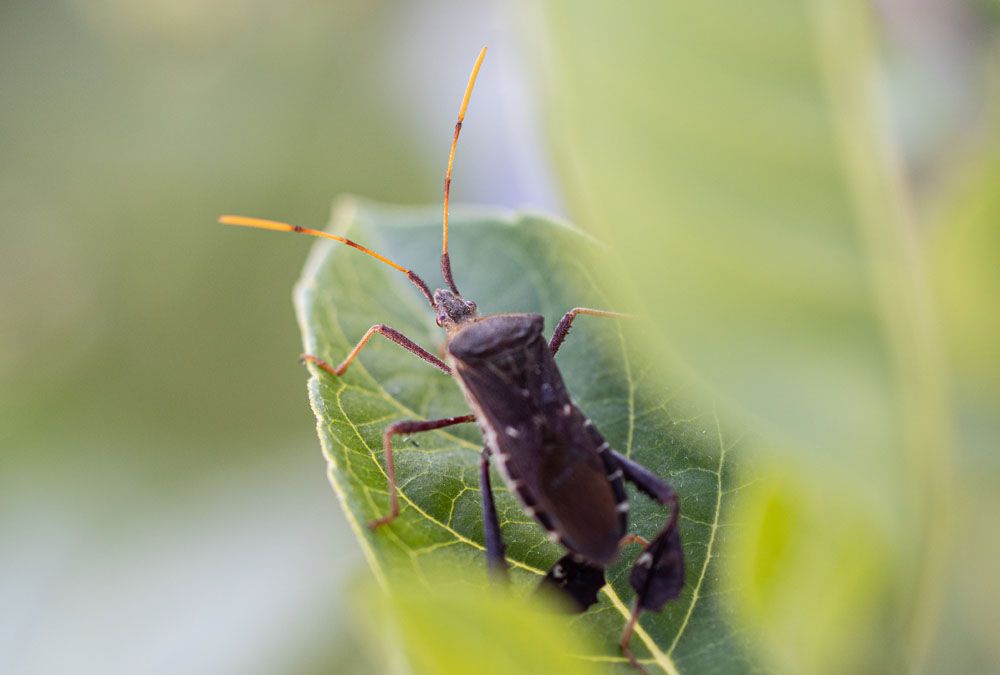
Leaffooted Bugs – Coreidae Family
Leaf-Footed Bugs: Appearance, Territory, Damage and Life Cycle
Latin Name: Coreidae
Appearance: Adult leaf-footed bugs may be identified by their distinctive rear legs. In California, there are three common species of leaf-footed bugs: Leptoglossus zonatus, L. clypealis, and L. occidentalis. Adults of all three species range in size from 0.75 to 1 inch, with a thin brown body, and a white zigzag pattern across the wings. They have varied eating habits, but their management is identical.
Hosts Plants: Leaf-footed bugs eat on a broad variety of host plants, including pecan, fruit, citrus, millet, vegetables, and a variety of weeds.
Territory: You may have seen a curious “new” insect in your garden in recent years, particularly on tomatoes and pomegranates. These bugs might be leaf-footed bugs. Despite the fact that they are native to the western United States and are not new to California, leaf-footed bugs appear to be becoming increasingly abundant in gardens. Leaf-footed bugs are endemic to California and the western United States, and there are three common species. They are medium to large-sized insects that feed on fruits and seeds and are frequently encountered in groups.
Damage Insect Cause: The piercing-sucking mouthparts of leaf-footed bugs stretch more than half the length of their thin body. They suck plant fluids by probing into leaves, branches, and fruit. Feeding on the leaves and shoots of most ornamentals and many garden plants causes minimal apparent harm and is of little consequence. Feeding on little tomatoes can cause the fruit to abort, but feeding on medium-sized tomatoes might create depressions or discoloration at the feeding spot as the fruit expands and ripens. Feeding on ripe tomatoes might produce minor browning on the fruit’s surface, which should be of no concern to backyard gardeners. The damage is comparable to that produced by stink bugs and other plant pests.
Life History and Habits: Leaf-footed bugs have three phases of development: egg, nymph, and adult. Adults hibernate over the winter and emerge in the spring to deposit eggs on host plants. Figure 5 shows how eggs are placed in chains, and how there are five nymphal or instar phases. Leaf-footed bugs cause harm to plants in both their adult and nymphal phases.
